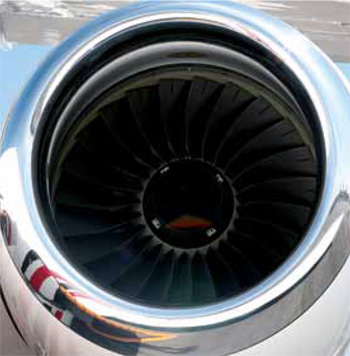Small Aircraft Regulation: Need for Introspection
The Directorate General of Civil Aviation (DGCA) has had a strict approach – if it is not the object of a legal provision, then it cannot be done.

The International Civil Aviation Organisation (ICAO), as one organisation representing all nations, was established to have international standards for safe operations of civil aviation around the globe. While ICAO issues acceptable standard & recommended practices (SARPs) in the form of Annexures for safe and efficient conduct of international civil aviation operations, each member state has been given the right, vide Article 38 of ICAO, to depart from international standards and procedures when it is felt impracticable to comply in all respects with any such SARPs or bring its own regulations or practices into full accord with any international SARPs after amendment of the latter. Article 38 also lays down procedure for filing the ‘difference’ between its own practice and that established by ICAO.
Around the world, different countries have different approaches towards regulating operations of civil aircraft. In some, “if it is not prohibited then it is legal (taking into account good faith and ethics)”. In others, “if it is not permitted by law then it is illegal. Civil Aviation industry has grown differently throughout the world depending which one was applied. In the US, Federal Aviation Administration (FAA), which is the regulator, follows the first approach and has the largest number of small aircraft operating in the world.
DGCA APPROACH

The Indian Directorate General of Civil Aviation (DGCA) has had a strict approach – if it is not the object of a legal provision, then it cannot be done. The way this approach was applied in India has led to framing regulations as a replica of ICAO’s SARPs, with all operational and training requirements being similarly applied to small domestic turboprop aircraft and the internationally operating big-sized jet. Any deviation from such uniformly applicable regulations, albeit not even relevant, by small aircraft operator, needs ‘one time approval’ to be given by a competent authority in the DGCA. This has resulted in what has been often described as unnecessary and complicated, therefore burdensome to the small aircraft industry.
It appears that the DGCA has felt necessary to codify exactly ICAO Annex 6 provisions, dealing with operation of aircraft, and it believes that ICAO will have issues should it do otherwise. However, as stated before, Convention on Civil Aviation (Article 38) recognises that, in exercising its sovereignty, a Contracting State is not obliged to codify ICAO provisions in its national regulations.
SAFETY MANAG EMENT SYSTEM
The Safety Management System (SMS) developed by ICAO (Annex 19) and being adopted world over, including the United States, is based on the philosophy of ‘due diligence’ and proactive approach to assess specific risks for every operation and taking all possible steps to mitigate these risks to acceptable levels. Safety is not to be confused with absence of risk. Every aircraft operation will be involved with some risks, but it is to be ensured that each flight is operated after ensuring risks are mitigated to tolerable levels, without any element of complacency.
There is an urgent need for the DGCA to bring more pragmatism and flexibility in framing regulations and discharging its responsibility as safety regulator.
The biggest factor causing accident around the world is human error. In case of human error accidents involving ‘well-trained’ and ‘experienced’ crew (mandatory requirement for all commercial operations), it is often found that ignorance and arrogance are the main causes. While ignorance of ‘perceivable risk’ can be addressed through focused education, arrogance is the one most difficult to handle. Safety regulations have to be focused on where risks lie, and they need to be proportionate, open and transparent. Pilot’s attitude to perceivable risk is the real cause of most of the human error accidents, especially the ones that are painfully repeated around the world. No regulator can legislate to protect people from their own attitude. Therefore, the best safety devise would be – a well-trained pilot, able to appraise risk and proactively mitigates all risks to tolerable and controllable levels (tolerable doesn’t necessarily mean acceptable).
DGCA FOLLOWS EUROPEAN SAFETY STANDARDS
The DGCA tends to follow European safety standards regulated through EASA. It is, therefore, pertinent to mention that Finland, which is one of the heavily regulated nations and doesn’t outsource any safety task, has worse safety record than other European nations. United Kingdom, on the other hand, has better safety record, where some safety tasks are delegated to aviation associations and other bodies.
There is an urgent need for the DGCA to bring more pragmatism and flexibility in framing regulations and discharging its responsibility as safety regulator. ‘Duty of care’ towards an unsuspecting public has to be exercised diligently and in a balanced manner, keeping in view national interest of ensuring affordable pan-India air-connectivity. In the development of rule-making, the US FAA is obliged, inter alia, to conduct an economic impact assessment and cost-benefit analysis and the result is evident with more than 70 per cent of world’s general aviation (GA), comprising predominantly small aircraft, operating there*. The DGCA does not have the means of its regulatory ambitions as it does not have the means to enforce them.
It would be in the best interest of all the stakeholders of the small aircraft industry in India, including the DGCA, to follow a pragmatic and collaborative approach to rule-making to ensure an enabled aviation and inclusive growth of Indian economy.
*Para 2.3.2 of ICAO Project IND/10/805 (Roadmap for General Aviation)





